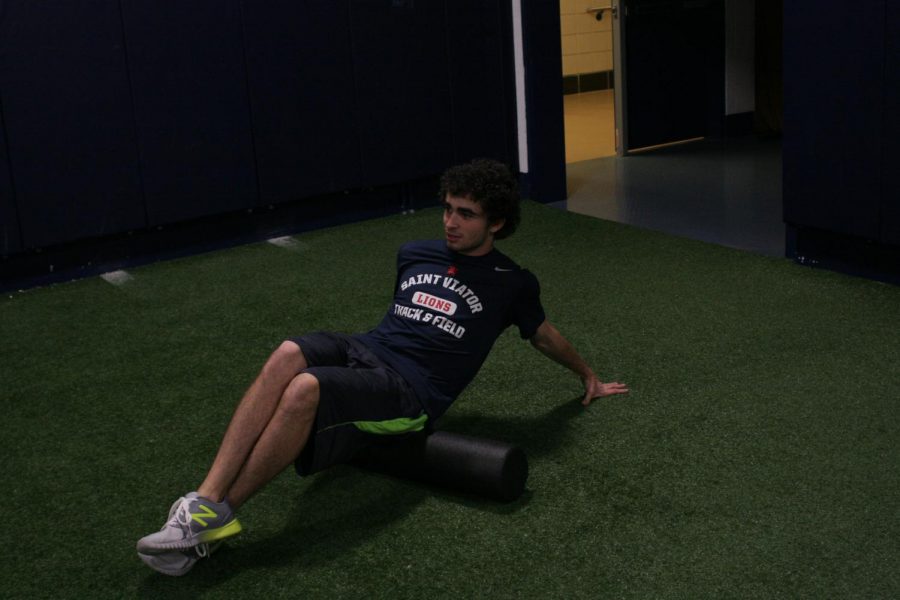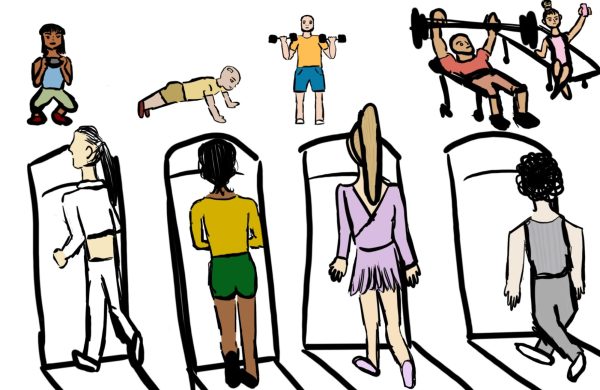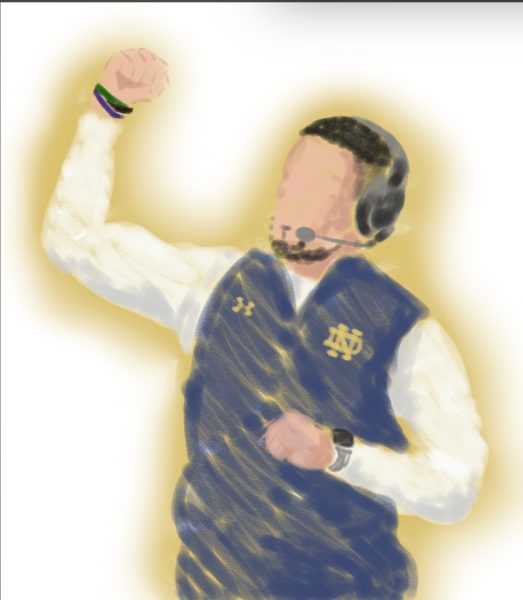Refueling through recovery
Athletes learn techniques to repair their bodies after workouts
Sweats drips down your face and your teeth churn as you go through your bench press workout. As you finish the last rep, the spotter grabs the bar and you lie on the bench exhausted. You leave the gym, feeling great and energetic, but twenty minutes later your whole body aches.
“Why am I so sore?” you think to yourself, but brush it off soon after. The next day when you go to the gym again, you hear a pop during your bench press reps and your arm goes numb.
While some athletes understand the importance of recovery after a workout, a majority of players do not. Recovery will not only help your body feel better, but it will enhance your performance after your workout.
Recovery involves lots of sleep, correct nutrition before and after a workout, stretching, and proven treatments for recovery such as hot yoga, yoga, ice and Epsom salt baths, and massage treatments.
A study done by the North American Journal of Sports Physical Therapy, NAJSPT, recorded that players who recover the correct way and scheduled certain treatments saw their sports performance increase, and players who did not recover correctly either stayed the same or saw their ability to play a certain sport decrease.
Coach Richard McLoughlin, Viator’s strength and conditioning coach, believes that recovery and recovering the correct way is vital to thriving in sports.
“The number one recovery method I would recommend, and the one high school athletes struggle the most with, is sleep!” Coach McLoughlin said. “There are incredible amounts of research displaying the negative effects of not getting enough sleep, especially when it comes to athletic performance and cognitive function.”
Coach Mcloughlin also suggested power naps for athletes. He believes that since getting the adequate 8 to 10 hours of sleep per night are difficult to obtain for high schoolers, a 20 to 60 minute power nap after school or practice will keep the athlete energized and more productive in the evening.
Richard Rinka, a senior three sport varsity athlete at Saint Viator, agrees that getting rest and having proper nutrition are vital for recovering.
“While rolling out and taking ice baths help, what keeps me injury free and refreshed the most is getting a substantial amount of sleep every night,” said Rinka.
Gina Garro, the athletic trainer for Viator athletics, has many of the same views as Coach McLoughlin regarding recovery. They both also believe that the proper amount of protein to have after a workout is 15-20 grams. To put that into perspective, a Gatorade recovery drink or bar is 40 grams of protein.
Ms. Garro also believes that one of the best ways to recover is an ice bath.
“What makes ice baths so much more useful and successful than ice bags are that they are able to stop the swelling of a joint, and the effects last much longer than ice bags do, up to 2 hours” said Ms. Garro.
While some athletes do know how to recover, they do not know when specifically to recover. Both coach McLoughlin and Ms. Garro believe that anywhere from immediately after a workout to an hour after a workout are the ideal times for recovery. They also emphasized the importance of eating a good meal filled with carbohydrates after a workout, practice or game.
Finally, the most important piece of recovery after a workout is stretching. So many athletes overlook the importance of stretching, and do not see the benefits of it, but stretching is a component of recovery that can help elevate athlete’s performances to the next level. Lactic acid builds up in joints after workouts, and if athletes do not stretch, this lactic acid will continue to build up and it will cause pain and stiffness.
Some of the most common and effective stretches are dynamic stretches, meaning that you are moving while you are stretching. Some great stretches to loosen up your legs include standing up and touching your toes, and doing this exact same stretch but crossing your feet left over right and vice versa. Some other stretches to loosen up joints are the Frankenstein walk, high knees, butt kickers, opening and closing the gate and C skips. All of these stretches help release lactic acid from your legs and help them feel refreshed. Some static stretches, or stretches where you don’t move, that are effective include the butterfly, leg swings, quad pulls, and putting your legs up against the wall.
Recovery will overall make you a better athlete and allow you to better perform at a higher level, regardless of the sport.
Your donation will support the student journalists of Saint Viator High School. Your contribution will allow us to purchase equipment and cover our annual website hosting costs.





